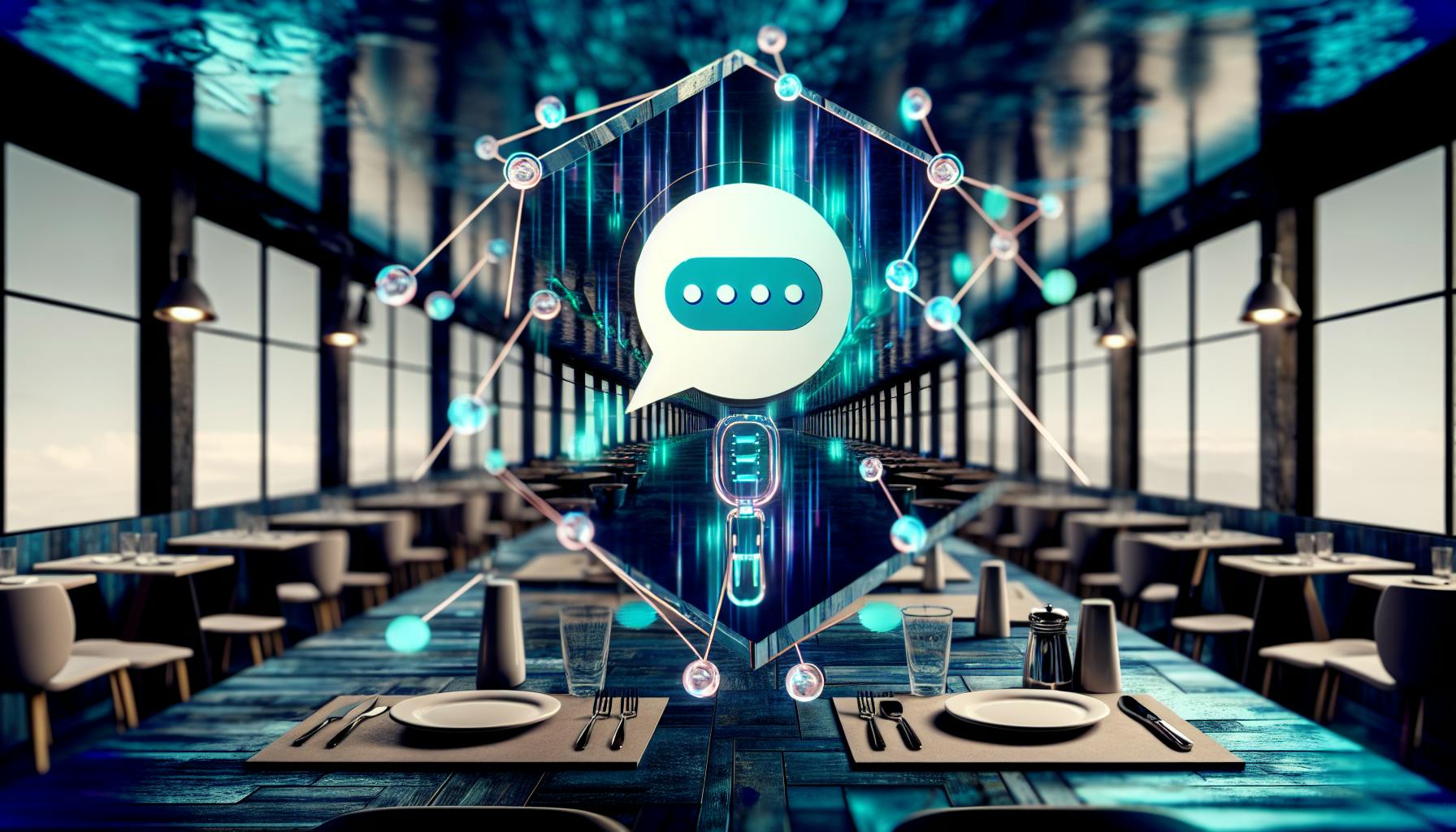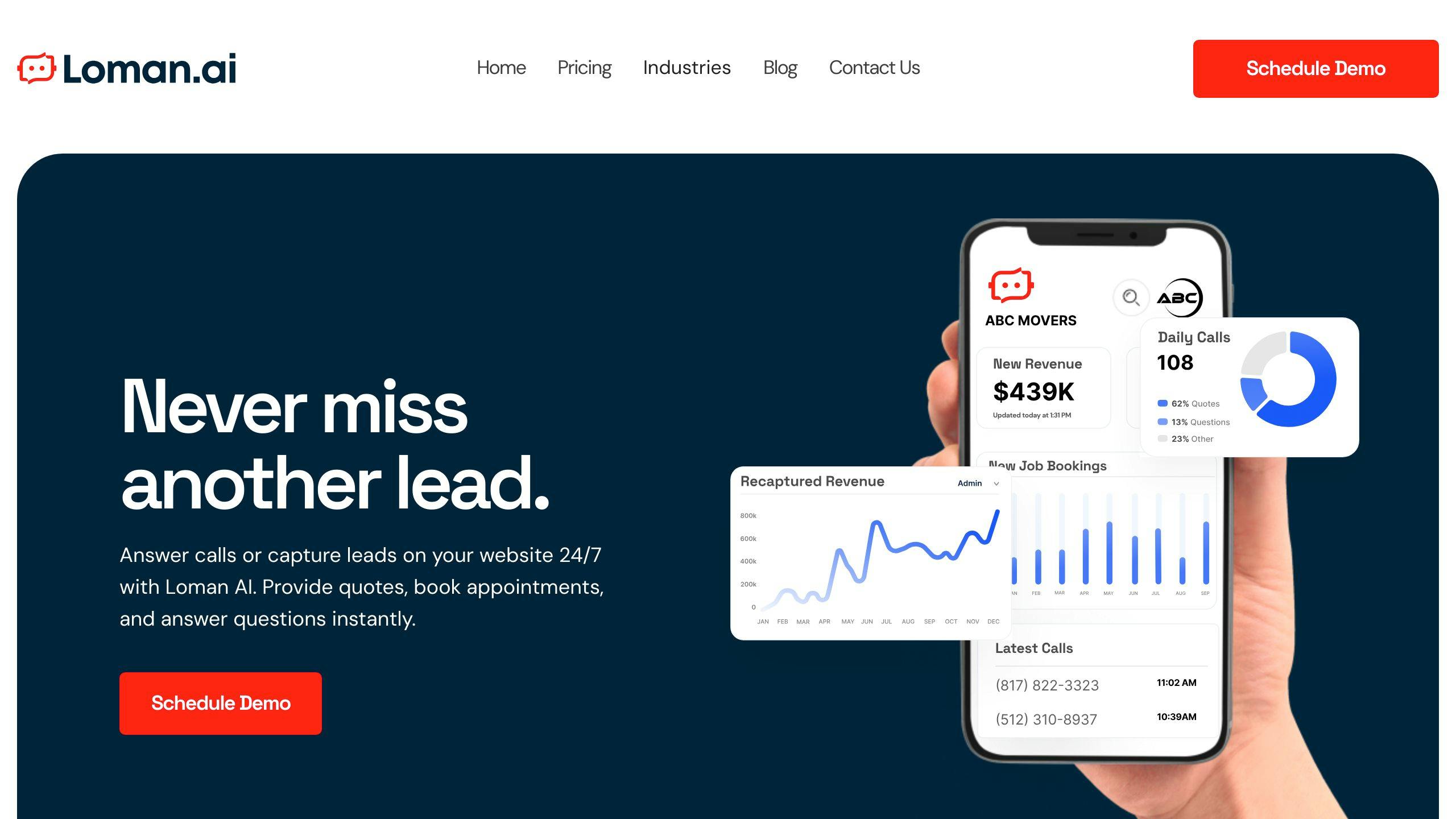March 17, 2024

Restaurant menu inquiry automation is revolutionizing the way eateries operate, enhancing efficiency, customer satisfaction, and boosting sales. Here's a quick overview:
Implementing such systems involves:
The future of this automation points to omnichannel deployment, enhanced tech stack integration, and advances in conversational AI, making menu inquiries more accessible and efficient. This not only streamlines operations but also significantly improves the dining experience.
Customers often have questions about the menu, including:
Using machines to answer these questions can make things a lot more efficient.
Answering lots of questions about the menu by hand takes a lot of time and work. It can also lead to mistakes. When the restaurant is busy, it's even harder for staff to give fast and correct answers. Using automation, or machines and software, helps restaurants deal with these issues.
AI and automation can make it much easier for restaurants to quickly and accurately handle lots of questions about their menus. By using smart tech that understands human language, restaurants can automatically sort through and answer questions.
AI systems, like chatbots, use something called natural language processing (NLP) to figure out what people are asking using everyday language. They can:
This means the system can answer lots of different questions on its own, without needing a person.
To make sure they give the right answers, these AI systems connect with:
This helps give correct, up-to-date answers that match what the restaurant offers.

Loman AI is a tool made just for restaurants. It can do things like:
By using this specific AI, Loman AI helps restaurants handle menu questions easily and efficiently.
When restaurants start using AI to answer questions about the menu, things get a lot easier and quicker. This tech takes over the job of answering common questions about what’s on the menu, what’s in it, if it’s available, and how much it costs. This means staff don’t have to spend time on these tasks and can do other important work instead. Studies have found that using automation can cut down the time spent on answering menu questions by more than half.
Using AI to answer menu questions makes things better for customers too. They can get answers right away, any time of the day, without waiting. Plus, because this tech understands everyday language, it’s easy for customers to get the information they need. This makes customers happier because they get quick and clear answers.
AI doesn’t just answer questions; it can also help restaurants sell more. It can suggest extra items or more expensive options based on what customers have ordered before. This can make customers more likely to buy more. Also, by looking at what questions people ask, restaurants can figure out what dishes or options are popular and adjust their menu to fit what people like.
Using AI to handle menu questions saves money because it cuts down on the need for staff to do this work. AI can handle a lot of questions at once, which would normally need a lot of staff. This saves money on employee costs. Research shows that restaurants that use automation need about 30% fewer staff for customer service. When this saving is applied across several locations, it adds up to a big difference.
Implementing a system that automatically answers questions about the menu can make things smoother for restaurants and improve the experience for customers. Here's a simple guide on how to get started with this technology:
First, restaurants need to figure out what they want to achieve with automation. This might include:
The system should work well with the restaurant's current software, understand questions naturally, and be really accurate.
When picking a tool for automating menu questions, look for one that:
A good choice is something like Loman AI, which is made just for restaurants.
The automation system needs up-to-date info from your restaurant like:
Follow the steps provided by the vendor to connect these systems safely.
Teach your team how to send menu questions to the automated system through the phone, website chat, or text. Also, show them how to use reports from the system to find ways to improve the menu or how things work.
Keep an eye on things like how many questions are being asked, how often the system gets it right, and if customers are happy. Use this info to make the system better over time. Also, pay attention to what questions are asked a lot to see if you need to change the menu to what people like.
By following these steps, restaurants can put in place an automated system to answer menu questions, making things run more smoothly, making customers happier, and helping to sell more. The key is to pick the right tool and make sure it works well with what you already have.
In the future, restaurants will use AI tools like Loman AI in more ways to help customers get menu information. This means using chatbots and virtual assistants not just on the phone but also on websites, social media, text messages, and popular messaging apps. This way, customers can get help with the menu easily, no matter how they like to talk to the restaurant.
Restaurants might also use these AI tools when you book a table online or let you scan a QR code at your table to see menu details and prices. The idea is to make getting menu information easy and smooth, no matter how you reach out to the restaurant.
Restaurants will make these AI menu helpers work better with the other tech they use. This means the AI will be connected with the cash register software, inventory lists, online ordering sites, and payment systems.
By doing this, the AI can get up-to-date information about what's on the menu, how much it costs, and what's in it. It will also make it easier to go from asking about the menu to placing an order or making a reservation without any trouble. This way, when you ask about the menu, you get the right answers, and it's easier to buy or book what you want.
Future AI systems will be better at chatting with customers, almost like talking to a real person. They will understand more complicated questions and remember what you talked about before.
These AI chatbots will also know about what you like based on your past orders and suggest things you might enjoy. As they talk to more people, they'll get even better at helping out. This means you'll be able to have a real conversation with these AI systems about the menu, just like you would with a waiter.
A restaurant automation system uses tech to help restaurants run smoother. This includes:
These systems help restaurants do their work faster and let staff focus on making customers happy.
An automated menu system is like a phone guide for restaurants. It helps direct calls without needing a person. For example:
This way, calls go straight to the right place or person.
Menu planning is deciding what dishes to offer. It involves:
Good menu planning helps restaurants be more efficient.
Automating order processing means using tech so customers can order by themselves through online systems or kiosks. This:
Automating orders can help sell more and make eating out better for everyone.

Enter your information in the form to receive a call from Loman and place an order like a customer would!